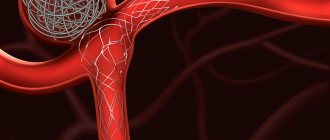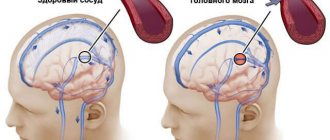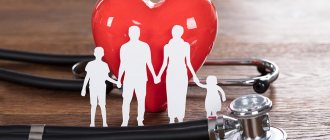The pancreas is an important part of the human digestive system. The production of enzymes that affect digestion and the functioning of the entire body as a whole depends on how this organ functions. Where does the pancreas hurt? When diseases affect the pancreas, a person experiences characteristic pain of severe intensity that occurs in the hypochondrium area. They often acquire an encircling character and are therefore felt everywhere. Everyone needs to know what problems with the pancreas are characterized by.
Pancreatic diseases
The digestion process is impossible without pancreatic juice, which is produced in the pancreas. It has 3 sections - head, body, tail. This gland has a complex structure, and the functions of the organ are very important. Its secretion is involved in the breakdown of proteins, fats, carbohydrates, and it produces the hormones glucagon and insulin.
When the functions of the gland are impaired, serious diseases develop, the most common of which are:
- pancreatitis (acute and chronic);
- autoimmune pancreatitis;
- pancreatic necrosis;
- cyst;
- stones;
- cancer.
The functioning of the organ affects energy metabolism; these diseases can lead to diabetes.
Does the pancreas affect the heart?
The most important organs of the digestive system - the liver, stomach and pancreas - are located in the abdominal cavity in close proximity to the heart. Consequently, any pathology of these organs can negatively affect the heart. In medical practice, there are quite frequent cases of patient requests regarding complaints of pain in the heart, the cause of which is diseases of the digestive organs, in particular the pancreas.
Acute pancreatitis (inflammation of the pancreas), like myocardial infarction, is a serious pathology. If not treated promptly, the patient's condition becomes critical and can result in death. In the acute form of pancreatitis, the pain is sharp and cramping. The pancreas is located behind the stomach and slightly to the left. This can explain the nature of the pain radiating to the heart and left hypochondrium in acute pancreatitis. Often the pain that occurs with this pathology spreads upward, to the region of the heart, and radiates to the left shoulder blade.
Diseases of the pancreas are not the only cause of pain in the heart area. Gallstone disease may not manifest itself for a long time. But sooner or later, especially after intense physical activity or due to stress, gallstones begin to make themselves known. Biliary colic appears, accompanied by arrhythmia and shortness of breath, which are characteristic of cardiovascular pathology.
When pain in the chest was provoked by a heavy meal, it is necessary to assume pancreatitis, despite the anginal localization.
When diagnosing, the doctor pays attention to atypical manifestations of gastrointestinal diseases. For example, gastroesophageal reflux (heartburn) is often accompanied by heart rhythm disturbances and chest pain. According to some reports, this pathology is one of the most common causes of chest pain, along with coronary heart disease.
Extrasystole
In the acute form of pancreatitis, pain that appears in the heart area is often accompanied by cardiac arrhythmias, or extrasystole. Patients often complain of interruptions in the functioning of the heart, especially if the disease progresses and is accompanied by intoxication and general weakness. With pancreatitis, extrasystoles, or arrhythmic contractions of the heart muscle, can be caused by pain. Vomiting and diarrhea accompanying acute pancreatitis also provoke the development of extrasystole.
Tachycardia
Another complication of inflammatory processes in the pancreas can be tachycardia, or rapid heartbeat. In acute pancreatitis, tachycardia can be caused by a fever or pain syndrome, which is accompanied by a high level of stress. Also, tachycardia is often a consequence of low blood pressure, characteristic of acute pancreatitis. In general, tachycardia is a serious condition that requires immediate attention. It may be accompanied by acute lack of air, dizziness, even loss of consciousness.
Symptoms of pancreatic diseases
The first manifestation of the disease is pain in the upper abdomen or left hypochondrium. Discomfort may also be felt in the back and under the left shoulder blade. Due to a violation of the outflow of pancreatic juice, internal edema begins and girdle pain occurs.
Unpleasant sensations intensify after drinking alcohol or overeating, especially fatty and spicy foods. Acute pancreatitis and pancreatic necrosis are characterized by paroxysmal severe pain.
Here are a number of other symptoms of the pancreas in the inflammation stage:
- nausea and vomiting;
- diarrhea;
- bloating and gas;
- weakness;
- yellowness of the skin;
- lack of appetite.
Decreased hormone production disrupts energy metabolism. Signs of diabetes mellitus appear - severe hunger and thirst, dry mouth, increased blood sugar.
Acute pancreatitis.
Acute pancreatitis is an acute inflammation of the pancreas.
Acute pancreatitis usually appears against the background of a person’s abuse of alcoholic beverages and previous alcohol poisoning.
Acute pancreatitis can also be caused by:
- improper or poor quality nutrition (eating fatty, spicy foods, frequent overeating);
- urolithiasis – the presence of kidney stones;
- heredity;
- trauma to the pancreas: previous operations, injuries, mechanical damage;
- uncontrolled use of medications, antibiotics;
- endocrine diseases, hormonal disorders.
- infections and viruses.
Symptoms of acute pancreatitis in Nizhny Novgorod.
The main symptom of pancreatitis is acute pain in the epigastric region, hypochondrium (right and left). Over time, the pain begins to become encircling, affecting the back, lower and lateral areas of the abdomen.
Detection of acute pancreatitis in Nizhny Novgorod.
If you suspect the development of pancreatitis in the body, the gastroenterologist prescribes the following set of examinations:
- a general blood test, which allows you to find out about the presence of an inflammatory process;
- Ultrasound of the abdominal cavity, which allows you to see changes in the internal organs;
- a general urinalysis to detect amylase in the urine, the presence of which indicates the development of pancreatitis;
- FGDS.
Causes of pancreatic diseases
A quarter of all cases of acute pancreatitis and pancreatic necrosis occur due to overeating and alcohol abuse. The causes are infections: viral, bacterial, fungal, parasitic.
Scientists have noticed an increasing trend in the incidence of chronic pancreatitis, with a decrease in the average age of patients, from 50 to 39 years. The most common causes of the disease:
- excessive consumption of protein and fatty foods;
- long-term use of a number of medications;
- pathologies of the gastrointestinal tract and liver;
- metabolic disorders;
- developmental anomalies;
- autoimmune diseases.
Acute and chronic pancreatitis lead to the formation of gland cysts - cavities inside which pancreatic juice accumulates. They disrupt digestive functions, cause inflammation and pain.
Pancreatic diseases can be congenital, appearing in infants. They occur in children due to food allergies and genetic disorders (cystic fibrosis, celiac disease).
Angina and heart attack under the guise of pancreatitis
Often, symptoms of pancreatic inflammation may hide problems with other organs, such as the heart. The heart is in close proximity to the pancreas, and in pathological conditions such as heart attack or angina, it can be difficult to determine the source. With these diseases, pain appears, radiating to the back and left shoulder.
Myocardial infarction
This is a dangerous, life-threatening condition. The danger also lies in the fact that for a long time it can be asymptomatic, and manifest itself only as pain in the abdomen or left arm. These referred pains are taken, in particular, for pancreatitis, as well as other diseases.
Pain in the area of the stomach and pancreas is manifested by the so-called abdominal infarction, which is a rather rare form of heart pathology.
In such cases, taking stomach medications (antacids and antispasmodics) does not bring significant relief. This means that the reason must be sought in something else. During myocardial infarction, pain develops progressively and reaches a peak within an hour. Taking nitroglycerin brings some relief. The appearance of pain is usually associated with great physical and psycho-emotional stress. Sometimes they occur after a heavy meal and may be accompanied by vomiting.
Angina pectoris
A very common disease, which is based on insufficient blood supply to the heart muscle. With angina, painful sensations vary in nature and intensity. They are usually localized behind the sternum. In some cases, referred pain appears in the epigastric region. They can be mistaken for a manifestation of acute pancreatitis or peptic ulcer of the stomach and duodenum. In this case, nausea often appears, turning into vomiting.
Various pathologies of the gastrointestinal tract may be accompanied by increased secretion. Excessive production of hydrochloric acid causes:
- nausea;
- heartburn;
- belching sour;
- epigastric pain.
These unpleasant symptoms are explained by insufficient production of digestive enzymes, which is typical for many gastrointestinal diseases, in particular pancreatitis. Such symptoms will allow the specialist to most likely exclude heart pathology.
With biliary dyskinesia and cholelithiasis, sharp, cramping or dull, aching pain appears in the right side. Problems with the gallbladder are a very common cause of chronic pancreatitis.
With angina pectoris and heart attack, pain occurs in the heart, radiating to the left side of the body. However, these symptoms are not always associated specifically with heart disease. Chest pain causes diseases of the musculoskeletal system, disorders of the digestive and respiratory systems. In any case, only a specialist can make an accurate diagnosis after conducting the necessary research.
Complications of self-medication and lack of treatment for pancreatic diseases
Self-treatment of symptoms with painkillers and stomach pills leads to dire consequences. Acute pancreatitis is quickly complicated by the development of infection. Suppuration forms in the organ, and necrosis (death) develops in the gland tissue.
With severe inflammation of the pancreas, the symptoms sharply intensify - respiratory and kidney failure develops, and blood pressure decreases. Chronic pancreatitis can be complicated by the following disorders:
- diabetes;
- hepatitis;
- gastrointestinal bleeding;
- intestinal dysbiosis;
- peritonitis.
If left untreated, pancreatitis and cysts lead to pancreatic cancer. Therefore, self-medication on the Internet or on the advice of pharmacists in a pharmacy is life-threatening.
First aid and treatment for heart pain
In all pathological conditions, it is necessary, first of all, to relieve pain with the help of antispasmodic intramuscular drugs, such as Papaverine or Platiphylline. Then, after the diagnosis is established, medications are prescribed to treat the pancreas. The most important condition for inflammation of the pancreas is to temporarily provide a state of rest for this organ using enzyme replacement therapy. For patients with pancreatitis, it is important to follow a strict diet that excludes fried foods and high-fat foods.
Diabetes
Pancreas as a vital organ
Diabetes mellitus is another of the most common diseases of the pancreas, which is associated with the lack of insulin production. In most cases, diabetes develops gradually, thereby sometimes smoothing out all the symptoms and allowing the person to get used to them. And this is very dangerous. The main signs that a person has diabetes include:
- Feeling of dry mouth. Moreover, the feeling will be constant, and even if you drink a large amount of water, it will not go away
- Increased urine output
- A sharp increase, and in some cases a sharp decrease in a person’s weight
- Dry skin
- Formation of pustules on the skin
- Constant feeling of muscle weakness
- Severe, even small wounds take a very long time to heal
If the disease has progressed to a more severe stage, then the person’s vision may deteriorate, wounds begin to appear that take a very long time to heal, constant headaches are tormented, consciousness is impaired, and a persistent smell of acetone is felt from the person’s skin. The main causes of diabetes include:
- Heredity. Those at risk are those whose parents or grandparents had this disease
- Excess weight
- Stress
- Age. Scientists have proven that the older a person is, the more likely he is to develop diabetes.
Due to the fact that the body stops producing insulin, it needs to be replenished. Quite often, patients are prescribed insulin injections. If the stage of diabetes is mild, then you can get by by taking pills or following a strict diet.
Causes
Causes of inflammation of the pancreas:
- Infectious diseases;
- As a result of injuries;
- Changes in the blood vessels of the pancreas;
- Inflammatory processes of other abdominal organs;
- Stagnant processes, formation of stones in the ducts of the gland;
- Cholecystitis;
- Allergic reactions to medications;
- Alcohol intoxication;
- Gallbladder diseases;
- Nutritional disorders (predominance of fatty, spicy foods in the diet, excess nutrition).
An attack begins when the secretion stagnates and the gland tissue is destroyed under its influence.
The chronic course of the disease is associated with the onset of morphological changes in tissues and the impact of any risk factor on the damaged organ. At this moment, exacerbation and new profound changes in tissues begin.
References
- Type 1 diabetes mellitus in adults. Clinical recommendations. Public organization "Russian Association of Endocrinologists", 2019. - 167 p.
- Guide to laboratory diagnostic methods. - M.: GEOTAR Media, 2007. - 800 p.
- Guyton, A., Hall, J. Medical physiology / ed. IN AND. Kobrina. - M.: Logosphere, 2008. - 1296 p.
- Nazarenko, G.I., Kishkun, A.A. Clinical evaluation of laboratory results. M.: Medicine, 2000. - 544 p.
- Regnell, S., Lernmark, Å. Early prediction of autoimmune (type 1) diabetes. Diabetologia, 2021. - Vol. 60(8). - P. 1370-1381.
When does pain occur with pancreatic cancer?
In every third person, the process is detected when cancer affects the entire gland, and in half it starts from the head. Cancer affects both sexes equally often, but it is a disease predominantly of mature people who have reached retirement age.
The leading manifestation of the disease is pain. It is generally accepted that the point of maximum severe pain can indicate the localization of the tumor in the gland; in practice, such differentiation is hardly possible - the gland itself is small, abundantly innervated, and involves a lot of other sensitive structures in the disease process. In addition, enzymes that spill into the surrounding tissue from destroyed glandular cells maintain painful inflammation and cause necrosis.
In most cases, patients complain of significant intensity pain of a girdling nature or localized high in the lower back on the right, not associated with movements and eating. Some foods can increase the pain syndrome, since the neoplasm is accompanied by inflammation of the surrounding glandular tissue - alcohol, smoked foods, fatty and fried foods, spices and everything that is considered unhealthy food. The main triggering factor for pancreatic damage, both inflammatory and tumor, is smoking.







